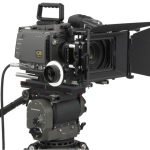Blog Archives
Autodesk Continues It’s Dominance
 Those remotely familiar with graphics or animation know the name of Autodesk, the worldwide leader in software for 2D and 3D effects. It’s Maya software gained popularity amongst amateurs through the revelation that Gollum from Lord of the Rings was created with it and spawned a younger generation to start dipping their feet into the software. In 2009 George Lucas’s Industrial Light and Magic made it a standard staple of it’s post production process, incorporating Autodesk into many of it’s high profile films.
Those remotely familiar with graphics or animation know the name of Autodesk, the worldwide leader in software for 2D and 3D effects. It’s Maya software gained popularity amongst amateurs through the revelation that Gollum from Lord of the Rings was created with it and spawned a younger generation to start dipping their feet into the software. In 2009 George Lucas’s Industrial Light and Magic made it a standard staple of it’s post production process, incorporating Autodesk into many of it’s high profile films.
From that summer’s series of effects driven films have all used different versions of Autodesk’s software, from the popular Maya used for animation in the rebirth of Star Trek; 3D Studio Max for digital matte painting in Transformers 2 & 3 and Inferno to create extensive photo-realistic fluid simulations of fire and water in the latest Harry Potter’s. All have been key components of these amazing displays of animation and effects that we marvel at. For the majority of artists in this field this comes as no surprise as they have been using Autodesk’s software for many years, but what has been a recent surge, is the up-and-comers who are learning either in school or right out of school the vast selection of compositing and effects software Autodesk has to offer.
Autodesk has been through is share of ups and downs over the last year from stock shares dropping in the first and second quarter of this year to finally stabilizing in the third, the company has recently come out of a restructuring and looks as strong as can be. With more and more artists both new and old continuing to utilize it’s vast software, Autodesk looks like it will continue to hold the market place for years to come. I’ve included the Autodesk Siggraph show reel for 2009, as expected it’s very, very impressive and I’m sure there’s more than one spot you’ll recognize.
American Cinema Editors Nominations Unveiled
 Well, the moment we’ve all been waiting for. Well, at least those of us who live the art of editing and post production. The American Cinema Editors’ have unveiled their nominations and here they are.
Well, the moment we’ve all been waiting for. Well, at least those of us who live the art of editing and post production. The American Cinema Editors’ have unveiled their nominations and here they are.
The ACE nominees for drama are: “Avatar,” “District 9,” “The Hurt Locker,” “Star Trek” and “Up in the Air.”
The ACE nominees for comedy or musical are: “(500) Days of Summer,” “The Hangover,” “It’s Complicated,” “Julie & Julia” and “A Serious Man.”
And the ACE nominees in the new category of animated feature are: “Coraline,” “Fantastic Mr. Fox” and “Up.”
So there we have it. There is also talk that the winner of the ACE for it’s respective categories also goes on to win the Oscar for ‘Best Picture’ regardless of whether it wins for ‘Best Editing’. So those who have taken it upon themselves a career of putting visuals together may have some bragging rights as to how important our little craft is. Mind you, it certainly helps to perhaps beone of the blessed few who have the opportunity to edit films such as Avatar but nevertheless, it is certainly a kudos to our profession to see the impact we can make at the highest of levels.
Sony’s F23 – Breaking the Hollywood Circle
 It seemed not too long ago that film was THE way to go if you were serious about a career in Hollywood. But from David Gordon Green’s ‘George Washington’ back in 2000, to now Michael Mann’s recent ‘Public Enemies’, the process has taken a turn. Green wanted his film taken seriously so he shot it on 35mm, which granted did give it a unique look and feel, while fast forward 8 years, Michael Mann shot ‘Public Enemies’ with mostly digital cameras sighting the versatility and visual detail as the main reasons. So are we seeing the death of film in modern filmmaking?
It seemed not too long ago that film was THE way to go if you were serious about a career in Hollywood. But from David Gordon Green’s ‘George Washington’ back in 2000, to now Michael Mann’s recent ‘Public Enemies’, the process has taken a turn. Green wanted his film taken seriously so he shot it on 35mm, which granted did give it a unique look and feel, while fast forward 8 years, Michael Mann shot ‘Public Enemies’ with mostly digital cameras sighting the versatility and visual detail as the main reasons. So are we seeing the death of film in modern filmmaking?
I can remember as an editor, editing my first film shot on film on an NLE platform, instructing the director to get a high-res transfer at Deluxe Studio, having to re-sync the sound, making my cut, then exporting the sequence with my EDL for the transfer house to cut into a reel. There was something kind of nice about that. It wasn’t the easiest process but somehow knowing your work was deciding such a finale of a physical cut made all parties take extra care of their work. Now, the most common thing I hear is “If they (people) don’t like it, we’ll just re-cut it…”. It’s not that people don’t care, they just know they have unlimited opportunities to ‘get it right’. And there’s pro’s and con’s to that.
Sony’s F23 seems to be the new Hollywood staple for films considering the digital approach. While way out of consumer leagues, this hefty little beast is turning the heads of Hollywood’s movers and shakers, and is even cracking the 3D visceral world as well. While the Thomson Viper FilmStream has been the most common HD camera used in conjunction with this new digital era, as of late prominent filmmakers have shifted their approach to Sony’s F23. Distinguished mentions include Michael Mann’s ‘Public Enemies’, David Fincher’s ‘Benjamin Button’, and the new 3D flick ‘Final Destination 4’ just to name a few. Of all of these films are transferred to 35 mm film print for their theatrical releases which begs a different question, how long will filmmakers wait till the era of omnipresent digital cinema to arrive and take them away from the world of film prints altogether?
Some industry enthusiasts say that could be a matter of five to ten years away, given the dramatic leaps at which the digital realm seems to be storming Hollywood, but there are some recognized film icons such as John Carpenter, Martin Scorsese, and even Stephen Spielberg who vow that digital cinema will never be able to fully envelope the theatrical experience the way celluloid can or replicate the depth and color’s of a film look entirely. However, given all that, Sony’s F23 is certainly a real sign that this new era has reached a maturity for digital cinematography, and is making headway fast. The biggest segment to embrace the new camera is commercial production because of the Sony’s F23′ s offspeed capabilities. Band Pro clients Clairmont Camera and The Camera House, both in LA, have already rented the F23 for spot shoots.
“Until the F23 came along, cameras in the 2/3″ chip world were designed much like ENG cameras. The Sony F23 is designed like a film camera. It’s very operator friendly. And the test footage I’ve seen looks remarkable. Even with the gain set at 12 dB, the equivalent of ASA 2000, it is virtually noiseless. Add to that the ability to dock a recorder on the top or rear of the camera and you have a versatile unit that can be used in the studio, handheld or Steadicam modes. It’s a winner!” – Denny Clairmont
Digital Imaging Technician Nick Theodorakis’s first field encounter with the F23 was a Clairmont system on a Michael Mann directed Nike commercial shot by Dante Spinotti, ASC. Citing the cameras wide color gamut and 14bit Analog to Digital Converter, Theodorakis said,
“All in all, it adds up to a sharper, denser image that has never been available to us in a camera of this class”
It looks as though there is no stopping the evolution of what is the digital era, and for editor’s who have been living under a rock for the past 10 years, the process is certainly vastly different from the fine cutting of celluloid. It is a process which at this point, if you’ve only dabbled in, should be fully embraced, since it’s post production possibilties are endless with the latest of these technologies. Yes, Sony’s F23 and it’s HDCAM backroll are here to stay.
